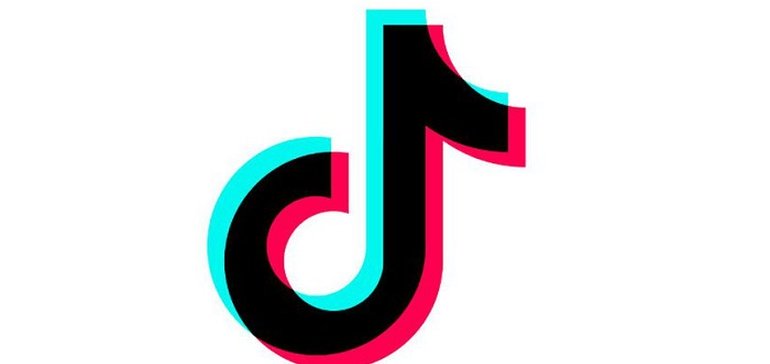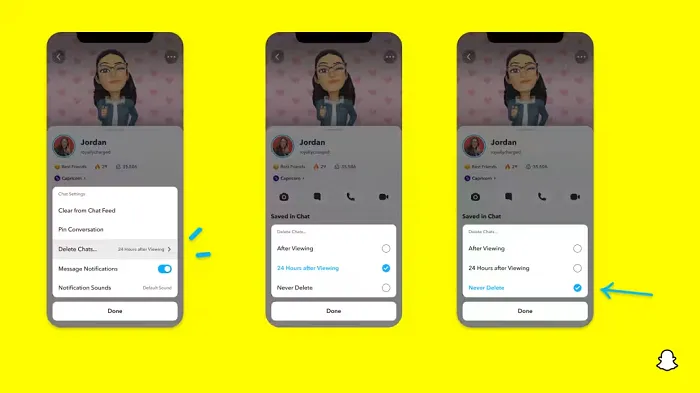SOCIAL
TikTok Employee Plans Legal Action Against US Government, New Insights Highlight Concerns About Younger Users


All’s quiet on the TikTok acquisition front, with Microsoft still looking like the leading contender to potentially acquire the short-form video app.
But even so, TikTok still has a range of other concerns to deal with, as more investigations and reports highlight issues of note with the app.
Here’s a quick round-up of some of the key TikTok stories, aside from its potential ban in the US, from this week:
TikTok Employees Versus US Government
While TikTok has said that the US Government’s executive order to force the sale of its US operations was “issued without any due process”, and may lead to a legal challenge as a result, this week, a TikTok employee has also decided to take on the US Government over it’s EO, in an effort to save the jobs of Americans who work for the platform.
As reported by Protocol:
“On Tuesday night, [TikTok employee Patrick] Ryan launched a GoFundMe campaign to raise money for a legal battle over the Trump administration’s recent executive order, which prohibits “any transaction by any person” with TikTok owner ByteDance beginning Sept. 20. Ryan, who describes himself as a “recovering lawyer,” argues that such an order would prohibit his employer from paying him and more than 1,400 other TikTok U.S. employees, thereby violating his constitutional right to due process.”
Some legal experts have said that this approach will not work, and that there are limited grounds to challenge an Executive Order, especially when The President invokes the International Emergency Economic Powers Act, which relates to national security threats. But it’s another wrinkle in the messy TikTok dispute, which has elements of xenophobia and paranoia, mixed in with genuine security concerns.
It’s difficult to tell which is the more powerful driving force in this case.
A Third of TikTok Users are Under 14
Meanwhile, The New York Times has gotten hold of an internal report from TikTok which highlights a particularly concerning element.
As per NYT:
“In July, TikTok classified more than a third of its 49 million daily users in the United States as being 14 years old or younger
So, two things – one, TikTok, according to this data, has 49 million daily active users in the US. For context, Snapchat has 90 million North American DAU. Twitter has 36m daily actives in America.
And while TikTok hasn’t released any official user counts, this also aligns with TikTok’s recent note that it has 100 million active users in the US. So, we can assume, based on this, that TikTok has 100m MAU and 49m DAU in America. Which is a lot, and as you can see, it holds up to comparison to other social apps. But it is worth noting in variance to the often-cited total download stats for the app, which are not an indicator of usage.
But the bigger concern here is obviously the very young demographic skew of the app. According to data obtained by NYT, 18 million TikTok users in the US are under 14, with former employees also noting that many are significantly younger, and are getting around the app’s age limiting access tools.
As you may recall, in February last year, TikTok’s parent company ByteDance settled on a record $5.7 million fine from the FTC over claims that it had illegally collected personal information from children under the age of 13.
Given that children still make up such a significant proportion of the app’s user base, various concerns still remain in this respect, and TikTok will need to show that it’s able to protect these younger users, and their personally identifying data, in order to avoid future complications around the same.
There was also this concerning note in the NYT’s report:
“TikTok does not rely only on users’ self-reported dates of birth to categorize them into age groups. It also estimates their ages using other methods, including facial recognition algorithms that scrutinize profile pictures and videos, said two former TikTok employees and one current employee, who declined to be identified because details of the company’s practices are confidential.”
So TikTok’s also taking in scans of young people’s faces, which, potentially, could be shared with the Chinese Government.
Ideally, that changes if/when TikTok is US-owned – but then again, it may still collect the same data, even if it’s not shared with the CCP.
It’s another element for Microsoft to analyze within its due diligence – which it’s conducting under a significant time constraint, especially for a multi-billion dollar deal.
French Officials Open Investigation into TikTok’s Data Practices
On another front, French officials have this week announced a new investigation into TikTok’s data-gathering practices, due, again, to concerns around its measures to protect younger users.
As per Bloomberg:
“The French authority, CNIL, is looking at a number of issues, including how the company communicates with users and the protection of children, a spokesman said Tuesday. The questions are part of an investigation into TikTok’s plan to set up a European Union headquarters for data purposes.”
European Union officials pledged back in June to conduct a more thorough investigation into TikTok’s processes before giving final approval for the company’s plan to establish a European data center in Ireland. As such, this investigation is mostly procedural – yet even so, it’s another pressure lever for the platform, which is facing intense scrutiny on several fronts.
And if TikTok is not, eventually, approved by EU officials, that could have significant ramifications in other regions.
ByteDance Found to Have Censored Anti-Chinese Sentiment in Another App
And the final TikTok-related news of note from this week is that TikTok parent company ByteDance has reportedly been censoring anti-China sentiment in its Indonesian news aggregation app Baca Berita – or ‘BaBe’ as it’s more commonly known.
“Chinese tech giant ByteDance censored content it perceived as critical of the Chinese government on its news aggregator app in Indonesia from 2018 to mid-2020, six people with direct knowledge of the matter told Reuters.“
So it’s been happening up till recently. In response, BaBe acknowledged that it had censored some content, but its regulations were changed in 2019. It did not comment on more recent findings of the same.
Yet, even if it has changed, the concern still remains that ByteDance has, at different times, instructed moderators of its apps to remove anti-China sentiment, which could essentially turn its apps into propaganda tools for the CCP.
TikTok moderators were also, at one stage at least, removing anti-China content, but they too have since updated their guidelines. There had been some suggestion, too, that TikTok was filtering out content related to the Hong Kong protests late last year, though no definitive evidence has been found to support these claims.
Yet, even so, in its Executive Order calling for the sell-off of the platform, the US Government noted that:
“TikTok also reportedly censors content that the Chinese Communist Party deems politically sensitive, such as content concerning protests in Hong Kong and China’s treatment of Uyghurs and other Muslim minorities. This mobile application may also be used for disinformation campaigns that benefit the Chinese Communist Party, such as when TikTok videos spread debunked conspiracy theories about the origins of the 2019 Novel Coronavirus.”
Which brings us back to the first point, and why TikTok has threatened legal action over the Order. Essentially, TikTok says that these claims are unfounded, and as such, do not constitute legal grounds for a ban.
As you can see, there are various elements at play, and while the concern over how TikTok works for, and can be utilized by, the Chinese Government remains, so too will the scrutiny.
Though even if TikTok is to be sold off, the amount of younger users in the app is also a key concern.
The roller coaster ride continues on.
SOCIAL
Snapchat Explores New Messaging Retention Feature: A Game-Changer or Risky Move?

In a recent announcement, Snapchat revealed a groundbreaking update that challenges its traditional design ethos. The platform is experimenting with an option that allows users to defy the 24-hour auto-delete rule, a feature synonymous with Snapchat’s ephemeral messaging model.
The proposed change aims to introduce a “Never delete” option in messaging retention settings, aligning Snapchat more closely with conventional messaging apps. While this move may blur Snapchat’s distinctive selling point, Snap appears convinced of its necessity.
According to Snap, the decision stems from user feedback and a commitment to innovation based on user needs. The company aims to provide greater flexibility and control over conversations, catering to the preferences of its community.
Currently undergoing trials in select markets, the new feature empowers users to adjust retention settings on a conversation-by-conversation basis. Flexibility remains paramount, with participants able to modify settings within chats and receive in-chat notifications to ensure transparency.
Snapchat underscores that the default auto-delete feature will persist, reinforcing its design philosophy centered on ephemerality. However, with the app gaining traction as a primary messaging platform, the option offers users a means to preserve longer chat histories.
The update marks a pivotal moment for Snapchat, renowned for its disappearing message premise, especially popular among younger demographics. Retaining this focus has been pivotal to Snapchat’s identity, but the shift suggests a broader strategy aimed at diversifying its user base.
This strategy may appeal particularly to older demographics, potentially extending Snapchat’s relevance as users age. By emulating features of conventional messaging platforms, Snapchat seeks to enhance its appeal and broaden its reach.
Yet, the introduction of message retention poses questions about Snapchat’s uniqueness. While addressing user demands, the risk of diluting Snapchat’s distinctiveness looms large.
As Snapchat ventures into uncharted territory, the outcome of this experiment remains uncertain. Will message retention propel Snapchat to new heights, or will it compromise the platform’s uniqueness?
Only time will tell.
SOCIAL
Catering to specific audience boosts your business, says accountant turned coach

While it is tempting to try to appeal to a broad audience, the founder of alcohol-free coaching service Just the Tonic, Sandra Parker, believes the best thing you can do for your business is focus on your niche. Here’s how she did just that.
When running a business, reaching out to as many clients as possible can be tempting. But it also risks making your marketing “too generic,” warns Sandra Parker, the founder of Just The Tonic Coaching.
“From the very start of my business, I knew exactly who I could help and who I couldn’t,” Parker told My Biggest Lessons.
Parker struggled with alcohol dependence as a young professional. Today, her business targets high-achieving individuals who face challenges similar to those she had early in her career.
“I understand their frustrations, I understand their fears, and I understand their coping mechanisms and the stories they’re telling themselves,” Parker said. “Because of that, I’m able to market very effectively, to speak in a language that they understand, and am able to reach them.”Â
“I believe that it’s really important that you know exactly who your customer or your client is, and you target them, and you resist the temptation to make your marketing too generic to try and reach everyone,” she explained.
“If you speak specifically to your target clients, you will reach them, and I believe that’s the way that you’re going to be more successful.
Watch the video for more of Sandra Parker’s biggest lessons.
SOCIAL
Instagram Tests Live-Stream Games to Enhance Engagement

Instagram’s testing out some new options to help spice up your live-streams in the app, with some live broadcasters now able to select a game that they can play with viewers in-stream.
As you can see in these example screens, posted by Ahmed Ghanem, some creators now have the option to play either “This or That”, a question and answer prompt that you can share with your viewers, or “Trivia”, to generate more engagement within your IG live-streams.
That could be a simple way to spark more conversation and interaction, which could then lead into further engagement opportunities from your live audience.
Meta’s been exploring more ways to make live-streaming a bigger consideration for IG creators, with a view to live-streams potentially catching on with more users.
That includes the gradual expansion of its “Stars” live-stream donation program, giving more creators in more regions a means to accept donations from live-stream viewers, while back in December, Instagram also added some new options to make it easier to go live using third-party tools via desktop PCs.
Live streaming has been a major shift in China, where shopping live-streams, in particular, have led to massive opportunities for streaming platforms. They haven’t caught on in the same way in Western regions, but as TikTok and YouTube look to push live-stream adoption, there is still a chance that they will become a much bigger element in future.
Which is why IG is also trying to stay in touch, and add more ways for its creators to engage via streams. Live-stream games is another element within this, which could make this a better community-building, and potentially sales-driving option.
We’ve asked Instagram for more information on this test, and we’ll update this post if/when we hear back.
-

 PPC7 days ago
PPC7 days ago19 Best SEO Tools in 2024 (For Every Use Case)
-
SEARCHENGINES6 days ago
Daily Search Forum Recap: April 19, 2024
-
SEARCHENGINES7 days ago
Daily Search Forum Recap: April 18, 2024
-

 WORDPRESS6 days ago
WORDPRESS6 days agoHow to Make $5000 of Passive Income Every Month in WordPress
-

 SEO7 days ago
SEO7 days ago25 WordPress Alternatives Best For SEO
-

 WORDPRESS5 days ago
WORDPRESS5 days ago13 Best HubSpot Alternatives for 2024 (Free + Paid)
-

 WORDPRESS6 days ago
WORDPRESS6 days ago7 Best WooCommerce Points and Rewards Plugins (Free & Paid)
-

 MARKETING6 days ago
MARKETING6 days agoBattling for Attention in the 2024 Election Year Media Frenzy



